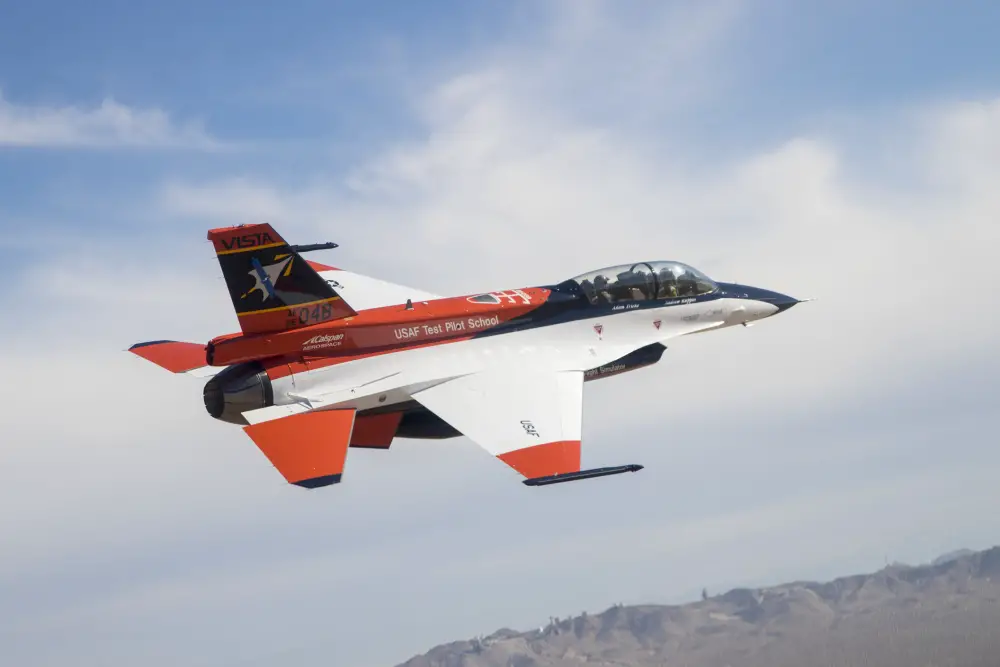The U.S. Air Force Research Laboratory (AFRL) Strategic Development Planning and Experimentation office has invested $15 million upgrading a decades-old workhorse to make it relevant for 21st century warfighter challenges. AFRL’s Autonomous Aircraft Experimentation team is using a highly modified Air Force Test Pilot School NF-16, an aircraft recently designated the X-62, to accelerate the development of tactical autonomy for uncrewed aircraft. The upgrades to the X-62, also known as the Variable In-flight Stability Test Aircraft, or VISTA, include software that allows it to mimic the performance characteristics of other platforms. It also could host a variety of autonomy behaviors, including those from the Skyborg Autonomy Control System and others provided by third-party industry partners.
Skyborg is a Department of the Air Force Vanguard project that has informed the transition of open, modular autonomy to enable combat mass using low-cost uncrewed aircraft. These vehicles will be equipped with autonomy systems and will assist human-piloted aircraft perform critical missions. Since March 2021, the Autonomous Aircraft Experimentation team executed 16 live test events focused on evaluating the Skyborg Autonomy Control System on the Kratos XQ-58 Valkyrie, UTAP-22 Mako and General Atomics MQ-20 Avenger uncrewed air vehicles. Unlike the uncrewed aerial vehicles such as the Valkyrie, Mako and Avenger, the X-62 has room for a crew of two, including a pilot who can supervise the autonomy control system’s performance, similar to the way the automotive industry tested autonomous driving features.

“The data generated during these tests, along with feedback provided from our user community, show that in order to rapidly develop and mature tactical autonomy on an appropriate timeline, investment in, and utilization of, a mature, tactically relevant platform is required. Ground and flight testing on X-62 is one of several steps we are taking to build out critical information networks and physical storage infrastructure necessary to enable rapid autonomy development. The goal by fall 2022 is to have it flying alongside an uncrewed platform, with both using tactically-relevant sensors while flying autonomy behaviors,” Matthew Niemiec, the autonomous aircraft experiment portfolio lead said.
The X-62 uses a “safety sandbox” that allows integration and flight of modeled air vehicles, control laws and autonomy capabilities. Two systems have been modified in the X-62. One is the VISTA simulation system, which allows the aircraft to mimic the flight characteristics of a different airplane. The other is the system for the autonomous control of the simulation, which enables different autonomous behaviors to fly the airplane. The Skyborg and other advanced autonomy development efforts like DARPA’s (Defense Advanced Research Projects Agency) Air Combat Evolution can leverage the X-62 as a surrogate for testing high-risk autonomous maneuvers. As part of the transformation into the X-62 VISTA, Lockheed Martin Skunkworks designed the system for Autonomous Control of the Simulation, a new system for VISTA.













